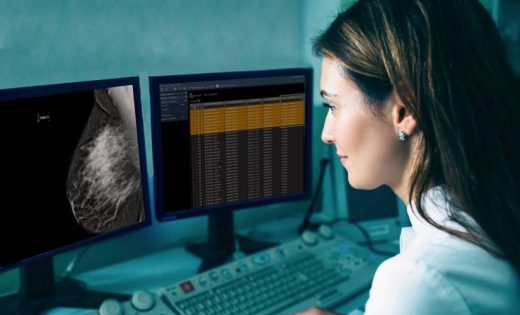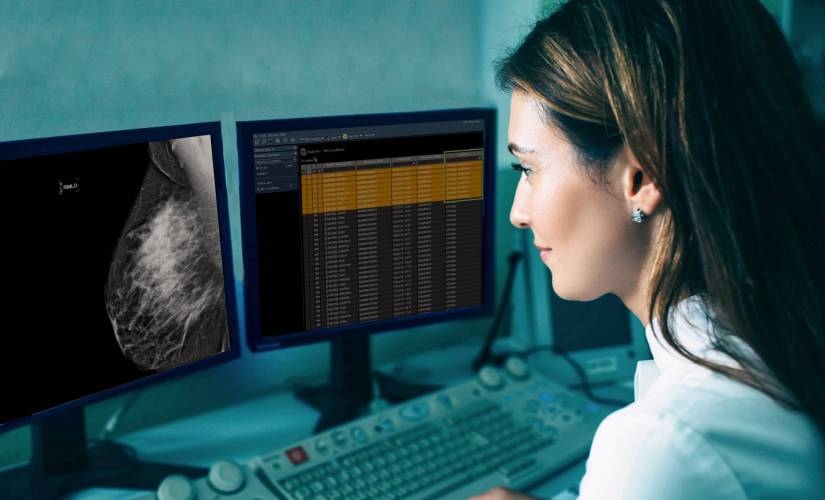How Is AI Changing Medical Imaging?
How Is AI Changing Medical Imaging?
Name an industry, and artificial intelligence is shaking it up. Some of the biggest changes, however, are happening in the quietest areas of the market.
One of those is medical imaging. Although it may not be as glamorous as autonomous vehicles, AI-driven imaging is doing something even more important: saving lives. Companies like CureMetrix are turning image analysis from a guessing game into a data-driven process.
The typical radiology patient doesn’t see doctors using CureMetrix’s technology. All they know is that their treatment depends on an accurate diagnosis.
What’s going on behind the scenes, and what’s next for the medical imaging industry? To find out, we sat down with CureMetrix CEO Navid Alipour. It turns out the answer is every bit as exciting as those self-driving cars. And no, the robots aren’t taking over any time soon.
A Revolution in Medical Imaging
To grasp just how much AI is changing the world of medical imaging, it’s important to understand what the low-tech process looks like.
“Not that long ago, medical imaging was a lot like ‘Where’s Waldo?’” Alipour explains. “Basically, experts would scan images and then search for tiny irregularities that could signal things like cancerous lesions.”
Despite all the training doctors and radiologists go through, they make mistakes. Studies suggest error rates of human-only analysis may be around 35 percent.
Think about that: Without the help of AI, a third of patients who undergo radiology are steered in the wrong direction. And for different reasons, errors in either direction are dangerous.
If something is missed — a false negative — the patient doesn’t receive treatment, and the cancer continues to grow. Many conditions that require imaging are time-sensitive. Every day that a cancerous tumor goes unnoticed, it grows larger and the risk of metastasis increases.
On the other hand, a false positive — meaning the radiologist mistakes a benign feature for a medical issue — can expose patients to invasive procedures unnecessarily. Biopsies, for example, are painful and costly. On average, 70-80 percent of them come back negative in the search for breast cancer while placing emotional stress on the patient, as well as her family.
How does CureMetrix minimize errors, and more importantly, what does that mean for patients?
A Second Pair of Eyes
Think of CureMetrix’s cmTriage like a second set of eyes. The AI can’t supplant the person using the tool — the radiologist — but it can help him or her know which cases may be suspicious.
Although AI won’t replace radiologists, those using AI will replace the ones who are not. Already, radiologists and mammography experts are in short supply, resulting in overwork, burnout, and costly errors — which can ultimately lead to lawsuits. CureMetrix empowers radiologists with data, serving as another arrow in their quiver in the fight against cancer.
Cleared by the FDA as a triage tool for breast cancer screening, cmTriage provides a pre-read for the radiologist, helping to identify suspicious cases. The result is the potential for greater sensitivity, as well as fewer patient recalls.
When it comes to detecting breast cancer, the average sensitivity of a radiologist is 84.4 percent, with 9.6 percent of cases requiring a second look. At 84.4 percent sensitivity, CureMetrix would have indicated that a total of 6.4 percent of the exams are suspicious. Even in default mode, the AI operates at higher specificity than radiologists.
Even more powerful is the fact that cmTriage can operate at higher sensitivities. Its default setting is 93 percent, but it can be set as high as 99 percent.
By combining deep learning and computer vision, cmTriage helps radiologists identify suspicious changes, enabling those with breast cancer to get treatment sooner. Just as importantly, it helps radiologists identify cases that are less suspicious or potentially normal, decreasing the chance that patients will be subjected to multiple visits or risky treatments.
Beginning with Breast Cancer
Currently, CureMetrix is available only for breast cancer detection. But why breast cancer, and what other conditions might it help with?
When I asked Alipour, he pointed to two things: scale and the unique challenges of breast cancer — the most complex of all cancers to detect.
Close to 300,000 Americans are diagnosed each year with breast cancer, comprising almost 30 percent of all cancer diagnoses in women. Secondly, an estimated $ 4 billion is spent annually on mammography false positives. Biopsies, often the second step in detection, exhibit a stunning 75 percent false-positive rate.
“We just couldn’t ignore numbers like that,” Alipour says. “There are a lot of different cancers out there, but few are as costly — in human or in monetary terms — as breast cancer.”
Fortunately for other cancer patients, mammography is only the start of AI’s medical imaging makeover. CureMetrix plans to expand its AI into other areas of medical imaging.
A One-Size-Fits-All Detection Tool?
Imaging is a critical tool in cancer detection, but it’s not the only one. Other methods, like methylation analysis, can also be augmented by deep learning tools.
“One advantage of deep learning,” Alipour notes, “is that it can deal with unstructured data. If fed the right training data, such an algorithm could spot cancer in other ways, like looking at chemical signatures.”
As an example, Alipour mentions a recent case at New York University Langone Health. A young girl was diagnosed based on tissue pathology with recurrent medulloblastoma, one type of brain cancer. With the help of AI, however, her doctors discovered it was actually another variety: glioblastoma.
Underscoring the importance of correct diagnosis is that the girl’s cancer may have been the result of radiation used to fight the first cancer. Had she been treated again in the same way, the treatment could have harmed her without actually destroying the new cancer.
Despite diagnostic breakthroughs in breast cancer, Alipour makes it clear that a universal cancer detection tool is still years away. How we get there, however, is exactly what CureMetrix is doing: starting with the most complex cancer, and building from there.
The post How Is AI Changing Medical Imaging? appeared first on ReadWrite.
(31)



